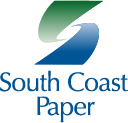Plotter paper is mainly used for architecture designs, engineering drawings, and graphics that need to be printed in large formats. Plotter printers allow professionals to print vector graphics that scale to any size, contrasted with a traditional printer that prints raster graphics – meaning the image starts to lose quality when it‘s scaled to large sizes. They take wide format sheets of paper and create high resolution images.
How is this different from a traditional office inkjet/laser/LED printer?
First, it’s important to understand the difference between a wide format printer and plotter. Format printers, including large format printers or wide format printers, create raster images using a grid of pixels. This is also the method used by many consumer home office and commercial printers, as well as multifunction printers that print, scan, and copy materials.
In contrast to raster files, vector files convert design information into mathematical values. Using these files, the various types of plotters draw continuous lines to create an image that can be scaled up to any size without losing image quality. These types of files are typically created using specialized software like Adobe Illustrator, which can output AI, SVG, and EPS file formats – all considered to be vector.
What is a plotter?
There have been a few different types of printers over the years. Early pen plotters created line drawings by having a mechanism where the pen moved over the paper. Flatbed plotters would lay out the entire roll of paper and have the pen move across it to create the image. The size of the image was limited to the paper size in the flatbed.
Drum plotters would wrap paper around a drum that feeds it through the machine, while the pen moves side-to-side to create the image. Despite printing technology primarily still using only black ink at this time, these printers supported the first color prints – before inkjet printers – by using various colored pens.
In the late 1980s, the first electrostatic plotters were developed. These would pass a positive electrical charge of the image across the drum, which attracts the toner that has an opposite charge. The toner is then fused with the paper using heat.
However, they quickly became outdated with inkjet printers, like the HP Designjet. An inkjet bond paper or plotter paper roll is put into the printer. A series of nozzles then eject tiny droplets of ink onto the printing surface (sometimes called a “substrate”) quickly and efficiently for high-speed, high-quality prints.
What types of projects are plotters typically used for?
By and large, the main users of plotter paper and printers are architects and engineers who use computer aided design software (or CAD software) to create technical illustrations. CAD paper rolls vary in width, with rolls 36 inches and 42 inches wide commonly used. These rolls could easily be 150 ft long or longer, allowing for very complex designs.
What are the advantages and disadvantages of plotters?
Even though there are a number of different types of printers, plotters allow professionals to print on a wider variety of materials than traditional printers do, including vinyl, plywood, metal, and plastic. Because they rely on vector images, they can reproduce a print without any image quality loss. They also support many different paper widths, ranging from 24 inches to 60 inches wide in some cases.
In contrast, plotters are typically larger and bulkier than format printers. They also can be a bit less cost effective, as they are designed for industrial uses more so than personal. Finally, because they rely on vector files as opposed to raster, it can take longer to print a design using a plotter than a traditional format printer, especially if the final product is very large.
At the end of the day, the question of what type of printer and paper to use comes down to the project requirements. If there is a potential need for very large graphics or illustrations, then using plotters with vector graphics is well worth the extra time and money it may take to produce the content. If the focus is more on cost efficiency and speed of output, then wide format printers can usually get the job done.
Where can I get high quality plotter paper?
South Coast Paper produces wide format plotter paper rolls at a wide variety of widths. You can order individual rolls or get a carton of paper rolls 20 lb or more at a great price. Our high quality bond paper products are perfect for government contracting, architecture and engineering projects, and large format printing. We use sustainable sourcing methods so our paper products are eco-friendly, and when you buy from South Coast Paper you’re supporting a minority-owned business.

